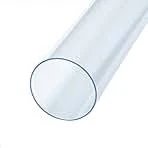Oct . 19, 2024 11:19 Back to list
hdpe sheet density
Understanding the Density of HDPE Sheets
High-Density Polyethylene (HDPE) is one of the most commonly used thermoplastic materials in numerous applications, ranging from packaging and piping to construction and engineering. One of the critical properties of HDPE that affects its application and usability is its density. This article aims to explore the significance of HDPE sheet density, how it is measured, and its implications in various industries.
What is HDPE?
HDPE, short for High-Density Polyethylene, is a type of polyethylene thermoplastic made from petroleum. It is characterized by its high strength-to-density ratio. The molecular structure of HDPE is such that it possesses a high degree of crystallinity, which contributes to its toughness and makes it more resistant to impact than many other materials. Its robust physical properties combined with chemical resistance make HDPE a perfect choice for a myriad of applications.
Understanding Density
Density is defined as mass per unit volume. For materials like HDPE, density is typically measured in grams per cubic centimeter (g/cm³) or kilograms per cubic meter (kg/m³). The density of HDPE typically ranges from about 0.93 to 0.97 g/cm³. This relatively low density, compared to other plastics and materials, is one of the reasons why HDPE is favored in applications where weight reduction is crucial while still maintaining structural integrity.
How HDPE Sheet Density is Measured
To determine the density of HDPE sheets, a simple formula can be applied
\[ \text{Density} = \frac{\text{Mass}}{\text{Volume}} \]
In practical terms, the weight of the HDPE sheet can be measured using a precise scale. The volume can be calculated using the dimensions of the sheet — length, width, and thickness. For consistency, measurements should be taken under controlled conditions, as factors such as temperature and humidity can influence the results.
Importance of HDPE Sheet Density
The density of HDPE sheets plays a significant role in determining their performance characteristics. Here are several aspects where density impacts usability
hdpe sheet density

1. Strength and Durability HDPE sheets with higher density generally exhibit higher strength and are more resistant to deformation under load or stress. This makes them ideal for applications in construction and heavy-duty packaging.
2. Weight Considerations For industries such as automotive or aerospace, where every gram counts, the low density of HDPE is advantageous. It allows for materials that offer adequate strength without significantly adding weight, thereby improving fuel efficiency.
3. Thermal Properties The density of HDPE sheets also influences their thermal conductivity and resistance. Lower density variations may be less effective in insulation applications compared to their denser counterparts.
4. Chemical Resistance While HDPE is inherently resistant to a wide variety of chemicals, the density can affect how it performs in different environments. Denser materials may better withstand corrosive chemicals found in certain industrial applications.
5. Cost Efficiency Understanding the density of HDPE sheets allows manufacturers and engineers to optimize material usage. By selecting the appropriate density, companies can save on costs while ensuring the structural integrity of their products.
Applications of HDPE Sheets
HDPE sheets are utilized in diverse fields due to their favorable properties
- Construction Used as liners in landfills, in roof tiles, or as barriers in construction projects due to their strength and resistance to moisture. - Packaging Commonly used for bottles, containers, and packaging materials because of their lightweight yet durable nature.
- Piping HDPE pipes are widely used in water supply systems, sewage systems, and in industries due to their ability to resist corrosion and environmental stress.
- Agriculture Used for geomembranes, silage bags, and other agricultural applications that require durability in exposed environments.
Conclusion
The density of HDPE sheets is a fundamental characteristic that influences their performance across various applications. By understanding and measuring its density, professionals in diverse industries can make informed decisions that enhance product quality and application efficiency. As the demand for sustainable and durable materials continues to rise, HDPE will remain a key player in the materials landscape, thanks to its favorable density properties and versatility.
-
Transparent PVC Pipe: Clear Flexible Tubing for Fluids
NewsAug.09,2025
-
Durable PP Rigid Sheet: Versatile & High-Quality Plastic Panels
NewsAug.08,2025
-
Premium Glossy PP Rigid Sheet – Durable & Versatile
NewsAug.07,2025
-
High-Quality HDPE Sheet | Durable Plastic Panels
NewsAug.06,2025
-
High-Precision PVC Rigid Sheets for Vacuum Forming | AI-Optimized
NewsAug.05,2025
-
Durable PVC-M Water Supply Pipes | 60-Year Life
NewsAug.04,2025

